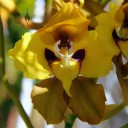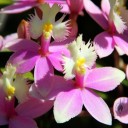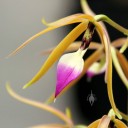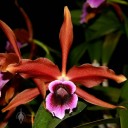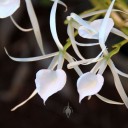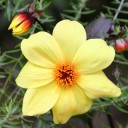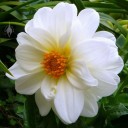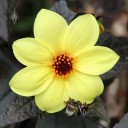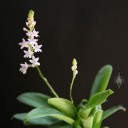Orchid in the Park 2012
Posted September 22nd, 2012 by Marc CohenCategories: Events, Growing Orchids in San Francisco, Mini Orchids, Photos
Celebrate today’s change of season with these gems from last weekend’s Orchids in the Park. The annual event put on by the San Francisco Orchid Society featured a multitude of treasures. Here’s a small sample —
The colors, scents, and shapes of orchids are certainly spectacular. Unexpected patterns emerge, like those of the Phal species in the next Orchids in the Park photo. It’s aptly named Phalaenopsis hieroglyphica, but it’s not Ancient Egyptian or Mayan. Is it speaking Orchid? In the middle photo, the brilliant colors of a mini Dendrobium species grow even more remarkable upon realizing that these blooms survive cold winds on New Guinea’s highest mountains. In the last photo, within a single glass container, Jewel Orchids earn their name from their colors and fractal leaf patterns. They don’t even need to bloom to impress, and you can fit a bunch into a large jar. That’s my idea of a happy equinox.
There’s a lot more from Dave’s and my cameras to share, so check back soon for additional photos from another successful Orchids in the Park.







